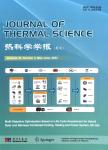Transition Modelling with the k-Ω Turbulence Model and an Intermittency Transport Equation
Transition Modelling with the k-Ω Turbulence Model and an Intermittency Transport Equation作者机构:Ghent University Dept. of Flow Heat and Combustion Mechanics Sint-Pietersnieuwstraat 41 B-9000 Gent BelgiumGhent University Dept. of Flow Heat and Combustion Mechanics Sint-Pietersnieuwstraat 41 B-9000 Gent BelgiumGhent University Dept. of Flow Heat and Combustion Mechanics Sint-Pietersnieuwstraat 41 B-9000 Gent BelgiumGhent University Dept. of Flow Heat and Combustion Mechanics Sint-Pietersnieuwstraat 41 B-9000 Gent Belgium
出 版 物:《Journal of Thermal Science》 (热科学学报(英文版))
年 卷 期:2004年第13卷第3期
页 面:220-225页
核心收录:
学科分类:080704[工学-流体机械及工程] 080103[工学-流体力学] 08[工学] 0807[工学-动力工程及工程热物理] 0801[工学-力学(可授工学、理学学位)]
基 金:European Commission EC: G4RD-CT-2001-00628
主 题:bypass transition intermittency SST turbulence model.
摘 要:In gas turbine engines, laminar-turbulent transition occurs. However, generally, the turbulence models to describe such transition results in too early and too short transition. Combining a turbulence model with a description of intermittency, i.e. the fraction of time the flow is turbulent during the transition phase, can improve it. By letting grow the intermittency from zero to unity, start and evolution of transition can be imposed. In this paper, a method where a dynamic equation of intermittency combining with a two-equation k-ωturbulence model is described. This intermittency factor is a premultiplicator of the turbulent viscosity computed by the turbulence model. Following a suggestion by Menter et al.[1], the start of transition is computed based on local variables.



